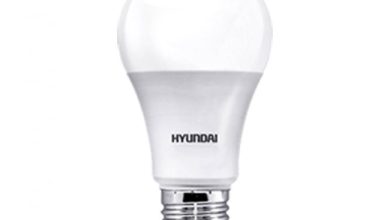QR Quest: Your Ultimate Guide to QR Code Scanning
In today’s digitally-driven world, QR codes have become an increasingly prevalent feature in our lives. From restaurant menus to product packaging, QR codes provide a quick and convenient way to access information with just a scan. In this comprehensive guide, we will delve into the world of QR code scanning, exploring everything from how QR codes work to the best practices for scanning them effectively.
Understanding QR Codes
First things first, what exactly is a QR code? QR stands for Quick Response, and these square-shaped barcodes are designed to store information that can be quickly accessed when scanned by a QR code scanner. Unlike traditional barcodes, QR codes can store much more data, including URLs, text, contact information, and even Wi-Fi network details. This versatility makes QR codes incredibly useful for a wide range of applications.
How QR Code Scanners Work
Now that we know what QR codes are, let’s take a look at how QR code scanner work. Most modern smartphones come equipped with a built-in QR code scanner, eliminating the need for any additional apps. To scan a QR code, simply open the camera app on your smartphone and point it at the QR code. The camera will automatically recognize the QR code and prompt you to open the associated link or view the embedded information. Alternatively, you can download a dedicated QR code scanner app from the app store if your phone does not have this feature built-in.
Tips for Effective QR Code Scanning
While scan qr code may seem straightforward, there are a few tips and tricks that can help you scan them more effectively. First and foremost, ensure that you are in a well-lit environment when scanning QR codes. Adequate lighting helps the camera capture the QR code more accurately. Secondly, hold your smartphone steady and ensure that the QR code is fully within the frame of the camera. Avoid shaky hands or moving the phone too quickly, as this can cause the scanner to have difficulty recognizing the QR code. Lastly, make sure that the QR code is clean and undamaged. Scratched or smudged QR codes may not scan properly, so always check for any imperfections before scanning.
The Many Uses of QR Codes
QR codes have countless applications across various industries. In the retail sector, QR codes are often used to provide product information, promotions, and discounts. Restaurants and cafes use QR codes on menus to offer digital versions or provide access to online ordering systems. QR codes are also commonly found on event tickets, allowing attendees to easily access event details or check-in. Moreover, businesses use QR codes on business cards to share contact information seamlessly. Even museums and art galleries have started incorporating QR codes into their exhibits, offering visitors additional information about the artwork on display.
Security and Privacy Considerations
While QR codes are incredibly convenient, it’s essential to be mindful of security and privacy concerns when scanning them. Malicious QR codes can redirect users to phishing websites or download malware onto their devices. To mitigate these risks, always verify the source of the QR code before scanning it. If you’re unsure about the legitimacy of a QR code, it’s best to avoid scanning it altogether. Additionally, be cautious when scanning QR codes that prompt you to enter sensitive information or download unfamiliar apps.
Looking Ahead: The Future of QR Codes
As technology continues to evolve, so too will the applications of QR codes. With the rise of contactless interactions and the increasing integration of QR codes into everyday life, it’s clear that QR codes are here to stay. In the future, we can expect to see even more innovative uses for QR codes, from personalized marketing experiences to enhanced augmented reality interactions. As QR code technology advances, it will continue to revolutionize the way we access information and interact with the world around us.
In conclusion, QR codes are a powerful tool that offers convenience and efficiency in accessing information. Whether you’re scanning a QR code to access a website, obtain product details, or make a payment, knowing how to scan QR codes effectively is essential in today’s digital age. By understanding how QR codes work, following best practices for scanning them, and being mindful of security considerations, you can make the most out of this versatile technology. So, next time you encounter a QR code, embark on your QR Quest with confidence and curiosity, knowing that the world of information is just a scan away.




